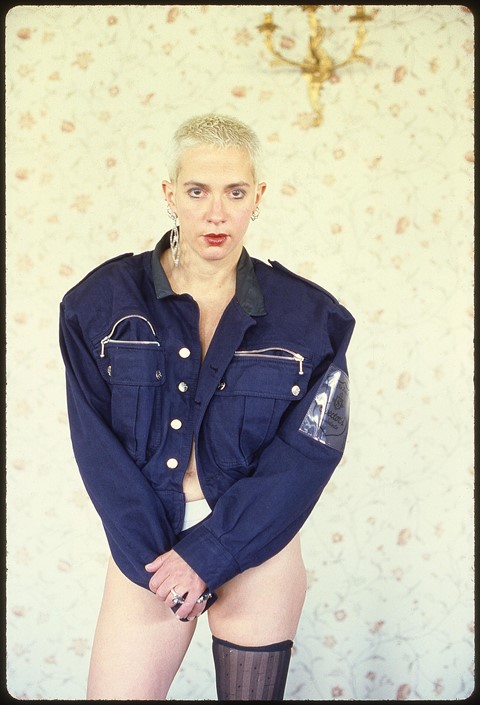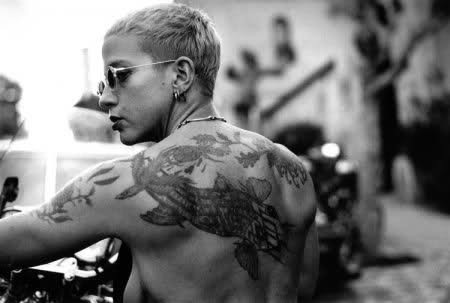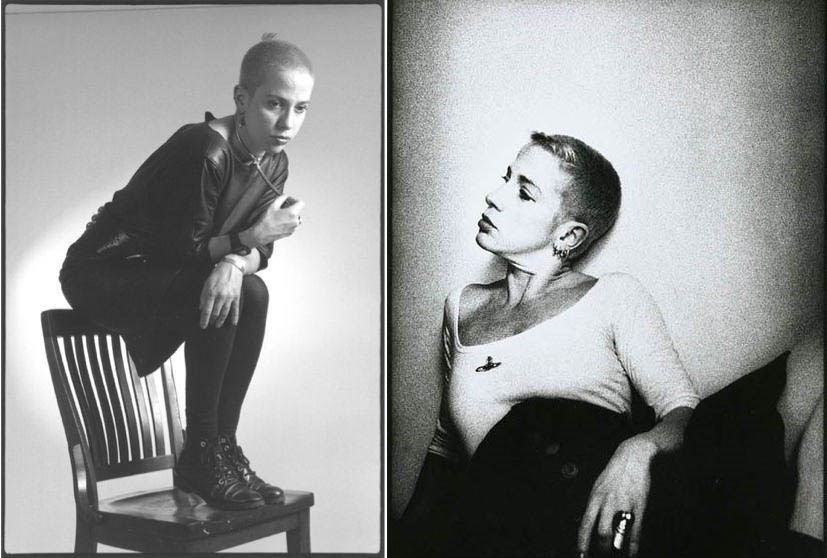In the first of our 'AnOther Woman' series — which examines the inimitable style, psyche and ideology of our favourite female pioneers — we consider the avant-garde author Kathy Acker, who refused to be censored
Author Kathy Acker (née Karen Lehman) is the epitome of punk philosophy made corporeal. With a powerfully visceral style of writing and an appropriation of the 'cut-up' technique of William S. Burroughs, alongside the sadism of Jean Genet, once she published Blood and Guts in High School in 1984 she found herself celebrated as a controversial pioneer of avant-garde literature. However, she was never one to conform to the expectations placed upon her — either as a woman (she aggressively confronted typically nonfeminine arenas like paedophilia and incest), or as a punk feminist (in 1997, she interviewed The Spice Girls for American Vogue). She disrupted everything from literature to fashion to pop culture — and here, we explore how her physical presence mirrored her radical ideology.

Defining Features...
Acker's powerful physical appearance — with her sharp blond crop, multiple ear piercings and bold, bulked-up body of tattoos — was considered as much of a statement as her literary works. Rather than dismissing fashion, she embraced it and incorporated it into her living manifesto of subversion: collecting provocative pieces from fellow emerging punk icons like Vivienne Westwood and Jean Paul Gaultier. She keenly discussed her love of spending money on clothes, but always courted controversy in discussion of her appearance; she once told Bomb magazine that she liked her lipstick red because her mother wore it and because it "looks like cunt color after fucking." Equally, her body itself was a statement; as Chris Kraus explained in Spike Magazine: "As she entered middle age... Citing the Japanese writer Yukio Mishima as an influence, she dedicated herself to weight training, tattooing, and body modification."

Seminal Moments...
In 1999 (two years after Acker's death), photographer Kaucylla Brooke started documenting 154 pieces of Acker's wardrobe in her photographic series Kathy Acker's Clothes. A disarmingly emotive set of images, as Brooke explains, "The effects of selfhood and identity are present, but the self is absent. Acker’s clothes were polyvocal, loud, and encyclopedic." Documenting everything from her bodycon velvet leopardprint minidresses to her beaten leathers, the series is a reminder of Acker's seminal sartorial moments as well as a poignant reminder that it is the woman who makes the clothes rather than the clothes the woman: they appear melancholicly empty without her presence.

She's AnOther Woman because...
Acker combined a wardrobe of Comme des Garçons with an ability to communicate the essential truth of her female experience, without shame or self-censorship. In spite of criticism from contemporary feminists, who claimed that she degraded and objectified women, and countries who banned her work (Germany claimed that Blood and Guts glorified incest and thus was unpublishable), she refused to let her understanding of the world be silenced. She pioneered female appropriation of a methodology and linguistic style of writing that was considered essentially masculine, and she did it all with a fierce dedication to presenting herself physically however she saw fit. Surely, a prime candidate for AnOther Womanhood.
